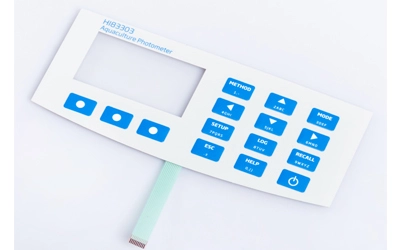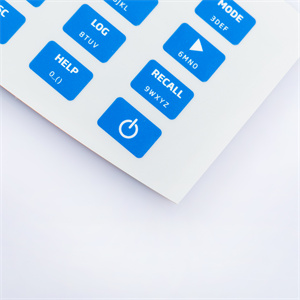
Membrane switches are widely used in various electronic devices due to their reliability, durability, and flexibility. A crucial component of these switches is the conductive paste, which plays a significant role in ensuring the proper functioning of the switch by affecting its resistance value. Understanding the relationship between conductive paste and resistance value is essential for optimizing membrane switch performance. This article explores the importance of conductive paste in membrane switches, how it affects resistance, and the factors to consider when selecting and applying conductive paste.
Conductive paste is a key material used in the construction of membrane switches. It is typically a blend of conductive materials like silver, carbon, or copper suspended in a polymer matrix. This paste is screen-printed onto the flexible substrate of the membrane switch to create the conductive pathways that connect various components of the circuit. The quality and composition of the conductive paste directly influence the electrical properties, including the resistance value, of the membrane switch.
Resistance value is a critical parameter in membrane switches, determining how easily current flows through the circuit. A well-balanced resistance value ensures that the switch responds accurately to user inputs while maintaining energy efficiency. If the resistance is too high, the switch may not register inputs correctly. Conversely, if the resistance is too low, it could lead to short circuits or excessive power consumption. Therefore, controlling the resistance value through the appropriate selection and application of conductive paste is vital for the reliable operation of the switch.


There are several types of conductive paste used in membrane switches, each with distinct properties that affect the resistance value:
Silver Conductive Paste
Silver is one of the most commonly used materials due to its excellent conductivity. Silver-based conductive paste offers low resistance, making it ideal for applications requiring high-speed signal transmission and low power consumption.
Carbon Conductive Paste
Carbon-based conductive paste is often used in applications where cost is a consideration. While it provides higher resistance compared to silver, it is suitable for applications that do not require ultra-low resistance values. Carbon paste is also more durable and less prone to oxidation than silver paste.
Copper Conductive Paste
Copper paste is another option, offering a balance between conductivity and cost. It provides lower resistance than carbon but is more affordable than silver. However, copper is more prone to oxidation, which can affect its long-term performance.
The resistance value in a membrane switch is influenced by several factors, including the type of conductive paste used, the thickness of the printed layer, and the curing process:
Paste Composition
The composition of the conductive paste, including the type and concentration of conductive particles, directly impacts the resistance value. Higher concentrations of conductive material typically result in lower resistance.
Layer Thickness
The thickness of the printed conductive layer is another critical factor. A thicker layer generally offers lower resistance, as there is more material to conduct the current. However, overly thick layers can lead to mechanical issues, such as reduced flexibility or increased wear.
Curing Process
The curing process, which involves heating the printed paste to solidify the polymer matrix, also affects resistance. Proper curing ensures that the conductive particles are well-bonded within the matrix, reducing resistance. Inadequate curing can lead to higher resistance and reduced reliability.
Environmental Factors
Environmental conditions, such as temperature and humidity, can impact the resistance value over time. For instance, exposure to high humidity can lead to increased resistance due to moisture absorption, while extreme temperatures can cause the conductive paste to degrade, affecting its conductivity.
To achieve the desired resistance value in a membrane switch, it’s crucial to optimize the application of conductive paste. Here are some best practices:
Precision in Printing
Accurate screen printing ensures consistent layer thickness and uniform distribution of the conductive paste, which is essential for maintaining consistent resistance across the switch.
Controlled Curing
Follow the manufacturer’s guidelines for curing temperature and time to ensure the conductive paste bonds properly. Over-curing or under-curing can negatively impact the resistance value and overall performance.
Environmental Testing
Conduct environmental testing on the membrane switch to ensure that the selected conductive paste maintains its resistance value under the conditions the switch will be exposed to during its operational life.
Conductive paste is a vital component in the construction of membrane switches, directly influencing the resistance value and, consequently, the switch’s performance. By understanding the relationship between conductive paste type, application, and resistance value, membrane switch manufacturers can optimize membrane switch design for specific applications. Whether choosing silver for its low resistance, carbon for its durability, or copper for a cost-effective balance, the key is to carefully control the factors that affect resistance. This approach ensures the development of reliable, efficient, and long-lasting membrane switches suited to a wide range of applications.